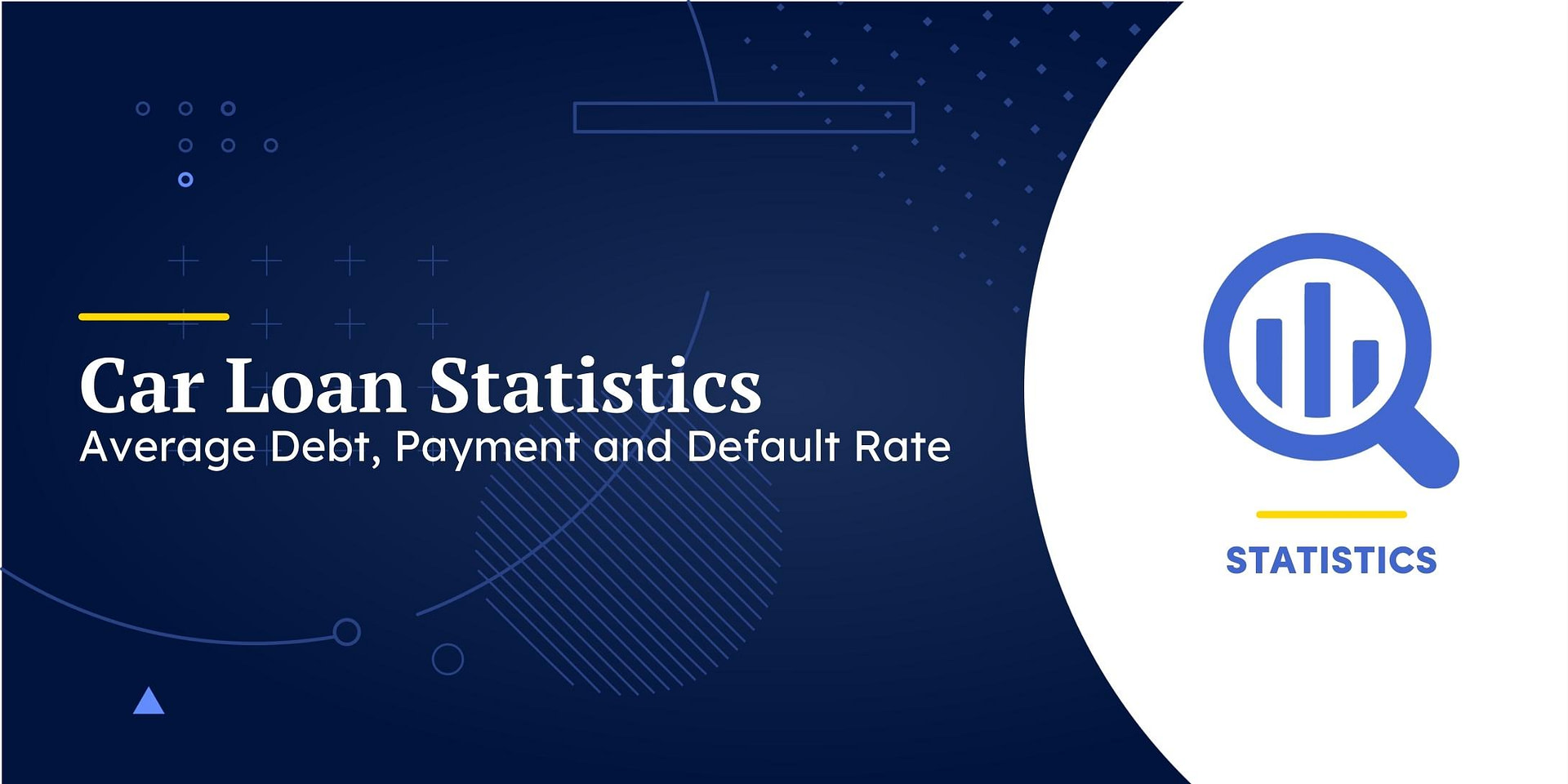There’s over $1.55 trillion in auto loan debt outstanding in the US, making it one of the major sources of consumer debt[1].
Let’s look at some data on car loans, including total car loan balances, rates, and average monthly payments.
Key Findings
- Overall, Americans owe $1.55 trillion in car loan debt representing 9.17% of all consumer debt in the country.
- 80.85% of new cars sold in the US in 2022 were acquired using some type of financing.
- The average monthly car payment for new cars in the US is $716.
- Auto loan rates for new vehicles in the US range from 4.75% to 13.42%, depending on credit scores and other factors.
Total Car Loan Debt in the US
Americans hit a fresh record of $1.55 trillion in car loan balances in Q4 2022, an increase of 2% over the last quarter of 2021[1]. Car loan debt represents 9.17% of all consumer debt in the US as of the end of 2022[2].
Average Car Loan Debt
The average amount financed for new car loans as of Q4 2022 was $41,445. This is a 17% increase since the last quarter of 2020[3].
The average amount financed for used car loans was $27,768 in Q4 2022, 22.6% more than reported in Q4 2020[3].
Share of Vehicle Purchases with Financing
More than 8 in 10 (80.85%) new cars in the US were acquired using some type of financing.
Consumers opting for used vehicles rely less on financing, with 39.81% using it[3].
Average Auto Loan Rates
The average interest rate for a 60-month new car loan reached 7.48% in Q1 2023, up from 4.52% a year before.
Interest rates for 72-month new car loans increased from 4.54% in early 2022 to 7.48% at the beginning of 2023[4].
Learn more: Your credit score has a huge impact on the interest rate you’re offered on an auto loan. Take a look at the average auto loan rates by credit score to know what to expect.
Car Loan Interest Rates by Credit Score
Average new car loan rates in the US significantly vary by credit card score and range from 5.18% for super-prime borrowers (credit score of 781 or above) to 14.08% for deep subprime consumers with credit scores below 500 as of July 2023. That’s a 94% difference in interest rates paid between the top and bottom credit score consumer groups[5].
Among consumers who took financing for used cars, the difference between groups is even greater, ranging from 5.99% among borrowers with excellent credit scores (720 or above) to 20.62% among consumers in the bottom credit score tier (below 580)[5].
Average Car Payment
The average monthly payment for new car loans has grown to $716, up from $646 and $578 in Q4 2021 and Q4 2020, respectively[3].
For used car loans, Americans are spending an average of $526 per month as of Q4 2022 (an increase from $490 in Q4 2021 and $417 and Q4 2020)[3].
Average Car Payments by Credit Score
New car loan holders are paying on average from $683/month (among super prime borrowers) to $700/month (among those with a credit score between 300 and 500) as of July 2023[3].
Average monthly payments for used cars range from $505 (among borrowers with top credit scores) to $524 (in the subprime credit score category)[3].
Auto Loan Delinquency Rate by 90 or More Days
3.94% of the outstanding auto debt was in serious delinquency (90 or more days late) as of Q4 2022, 0.25 percentage points lower than in the same quarter in 2021[6].
Auto Loan Default Rate
The annualized auto loan default rate reached 2.72% in January 2023, lower than the 3.24% registered in January 2019[7].
The content on finmasters.com is for educational and informational purposes only and should not be construed as professional financial advice. Finmasters is not a financial institution and does not provide any financial products or services. We strive to provide up-to-date information but make no warranties regarding the accuracy of our information.





